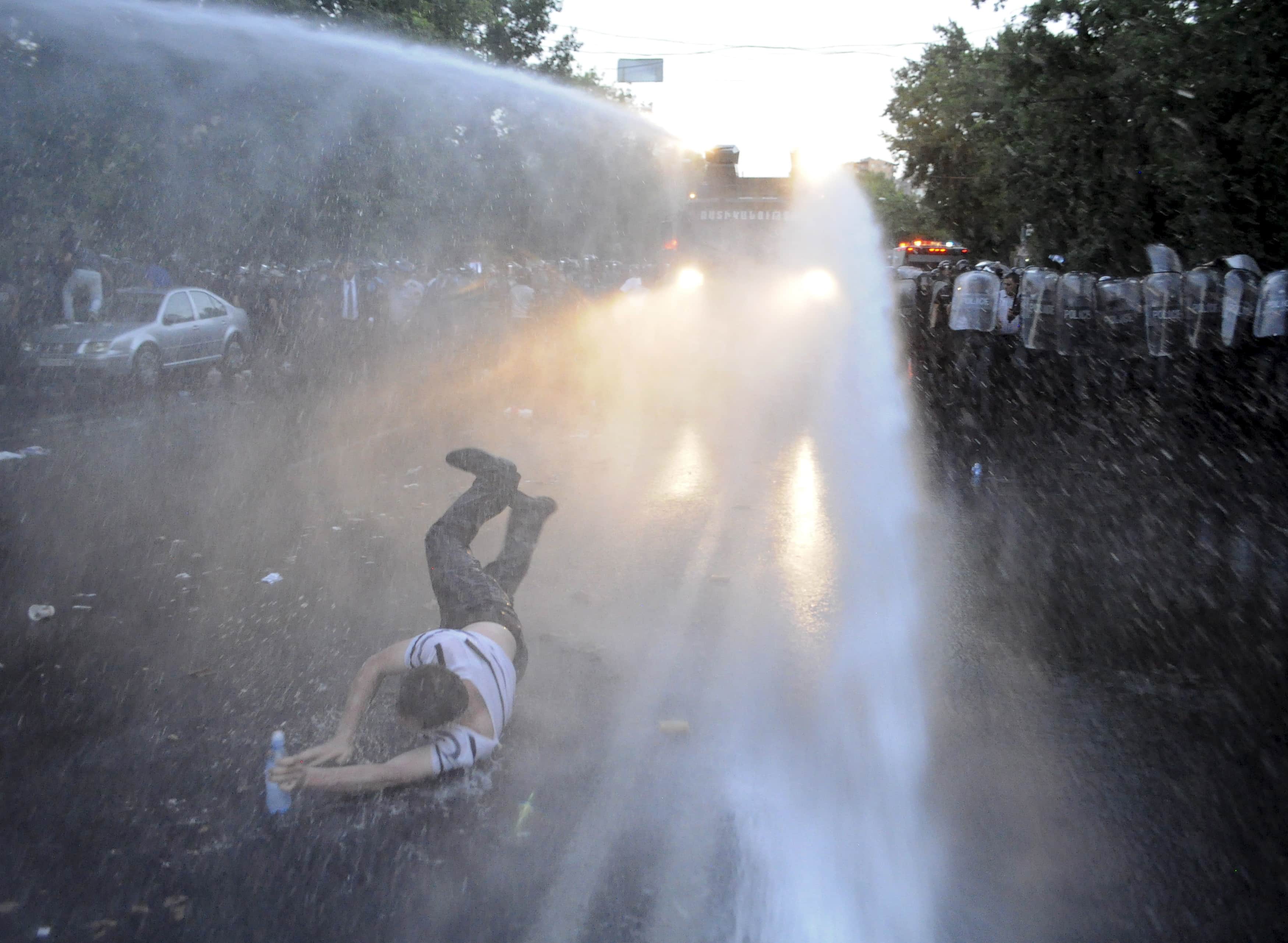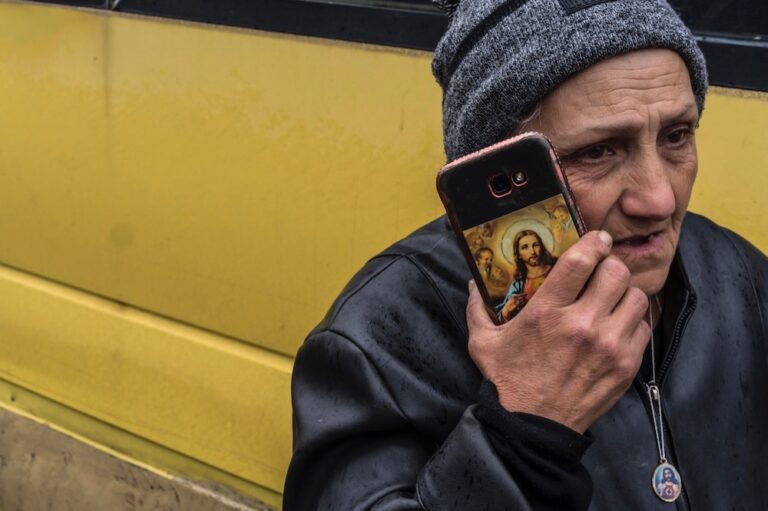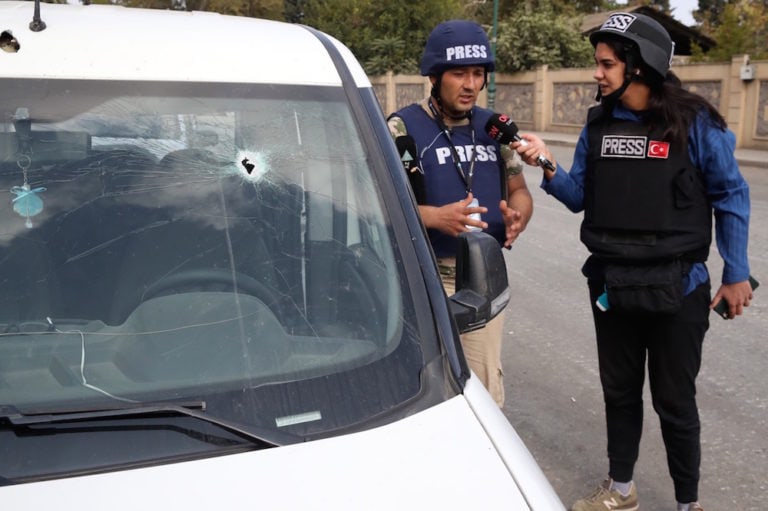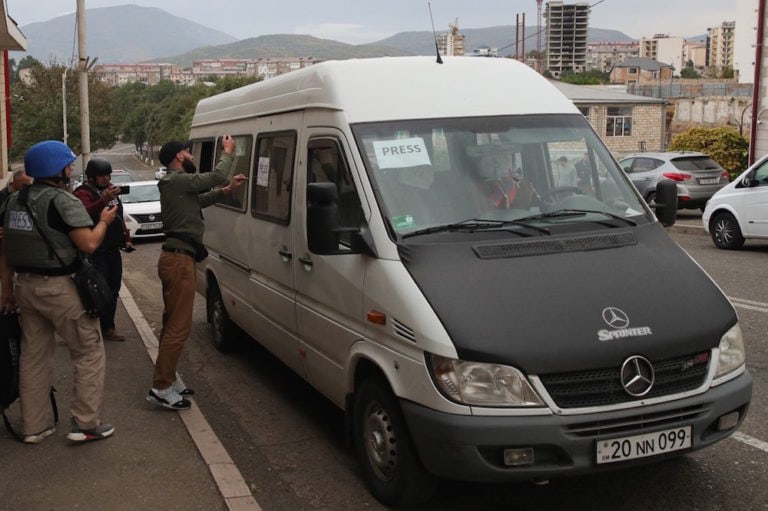Police in Armenia used force to disperse a largely peaceful protest on June 23, 2015, raising concerns about potential human rights violations.
This statement was originally published on hrw.org on 24 June 2015.
Police in Armenia used force to disperse a largely peaceful protest on June 23, 2015, raising concerns about potential human rights violations, Human Rights Watch said today.
The authorities should immediately open a thorough and impartial investigation to determine whether the force used was lawful and proportionate, and if not, ensure accountability for those responsible for use of excessive force. They should investigate all allegations of beatings, unlawful destruction of journalists’ equipment, and arbitrary detention of journalists covering the protests. The investigation should also examine the circumstances in which water cannons were deployed, such as what warnings were given to protesters and operational instructions on targeting of water jets.
“Even if the Yerevan demonstration was unauthorized, nothing can justify physical attacks on largely peaceful demonstrators and journalists covering the protests,” said Giorgi Gogia, senior South Caucasus researcher at Human Right Watch. “Police responsible for beating protesters and interfering with the work of journalists should be held to account.”
On June 19, demonstrators began round-the-clock protests in Yerevan, the capital, against plans by the national electricity company to raise electricity prices for the third time in three years. Hundreds of young people joined the protests, which took place on central Liberty Square, organized by the non-partisan, non-political group, “No To Plunder.”
On June 22, media reports said, hundreds of the demonstrators marched toward the presidential palace. When the police blocked them, they sat down on Marshal Baghramyan Avenue, one of Yerevan’s main thoroughfares. Early on June 23, the authorities warned protesters that the gathering was unsanctioned and told them to clear the street. The police warned that if the protesters did not cooperate, the police would use “special means” to disperse them. Soon thereafter police forcibly dispersed the crowd.
A witness told Human Rights Watch by phone that after police had given at least two warnings to disperse, many protesters stayed in place. Almost immediately, the police turned high-pressure water cannons against the protesters. The witness was sprayed in the face, causing his vision to be temporarily impaired, and was escorted to the hospital by other protesters.
Police officials told the media that at least 25 people, including 11 policemen, were injured. Several protesters sought medical assistance at hospitals.
A video posted by Radio Free Europe/Radio Liberty (RFE/RL) shows police using water cannons on people resisting dispersal by sitting on the ground, while some of the people are moving away from the protest. The video shows uniformed police and men in street clothes, some wearing arm bands that said “Police,” charging at protesters and dragging them away as well as some police chasing fleeing protesters.
Another video shows men in street clothes, one with the police armband, beating a young man. It is not clear whether the man was involved in the protests.
The media reports said the police attacked or detained numerous reporters, and in some cases smashed or confiscated cameras and deleted their photo and video materials.
Paylak Farhadian, a journalist for independent Gala TV, told Human Rights Watch that uniformed police and people in street clothes struck him, injuring a rib, though he was wearing a visible press badge and had a microphone. Police detained him for about 40 minutes.
A TV cameraman told Human Rights Watch that men in street clothes destroyed his camera and hit him on the head as he was filming the police action.
Police detained over 200 demonstrators, holding them for most of the day on suspicion of hooliganism and property damage. Some activists claimed that the number detained was higher, but Human Rights Watch could not independently verify the claims.
Human Rights Watch received a number of reports of police interfering with demonstrators’ access to a lawyer. Robert Revazyan, a lawyer from Armenian Helsinki Committee, said that officials at the Shengavit district police station denied him access to his client for more than an hour, during which they questioned the client. Police continued the questioning in Revazyan’s presence, but then forcibly pushed Revazyan out of the station and then conducted alcohol and drug testing on his client. Another lawyer from the Armenian Helsinki Association had similar problems in the same police station, waiting for two hours to see his client.
An Armenian human rights defender told Human Rights Watch that by the evening of June 23 all of those detained had been released without charge, but police told them they could be further questioned as witnesses or suspects in an investigation.
Armenia is a party to a number of human rights treaties, including the European Convention on Human Rights, which obliges the government to respect the right to freedom of assembly and to refrain in all circumstances from ill-treating protesters. In particular, the European Court of Human Rights has noted that although governments can require that protests obtain prior authorization, respect for freedom of assembly requires that authorities show a degree of tolerance toward peaceful gatherings, even if they are not authorized, and that any sanction for participation in an unauthorized demonstration be proportionate so as not to deprive the right to assembly of all meaning.
The government also has a duty to conduct prompt, thorough, and effective investigations into alleged abuses and remedy violations of those obligations.
On the evening of June 23, according to media reports, several thousand people gathered at the site of the dispersed protest, to demonstrate against the police use of force. The new demonstration included many of those previously participating in the protests, as well as many of their parents and other supporters. Peaceful protests were continuing on June 24.
“With the renewed protests, Armenian authorities have a chance to show respect for peaceful assemblies and refrain from repeating the violence against demonstrators,” Gogia said. “The authorities should make clear at the highest levels that aggressive and illegal police actions will absolutely not be tolerated.”



